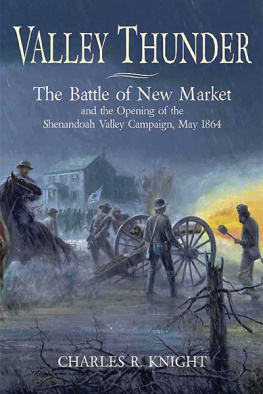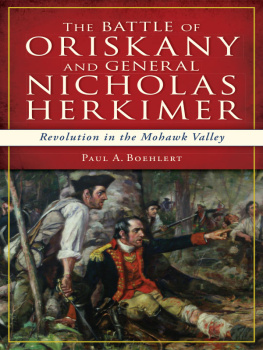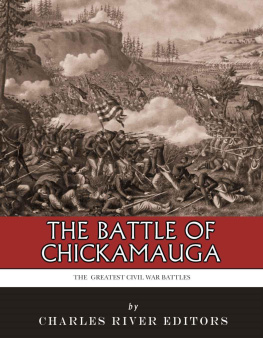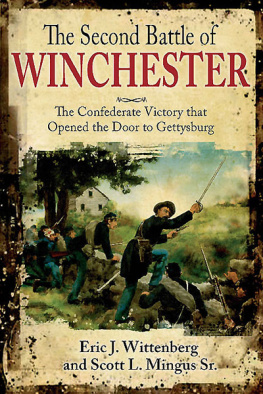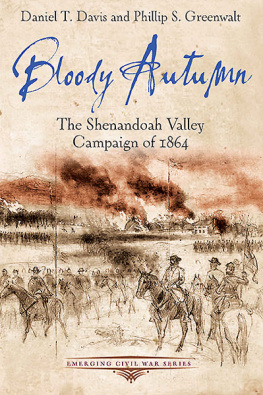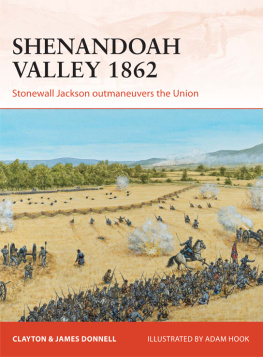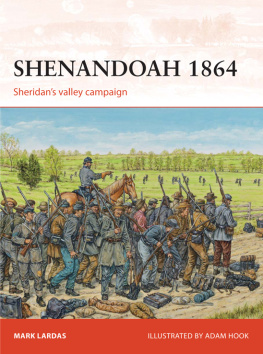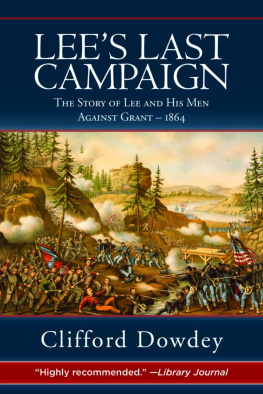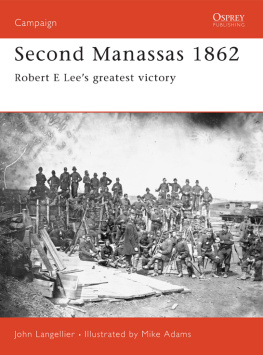

2010 by Charles R. Knight
All rights reserved. No part of this publication may be reproduced, stored in a retrieval system, or transmitted, in any form or by any means, electronic, mechanical, photocopying, recording, or otherwise, without the prior written permission of the publisher. Printed in the United States of America.
Cataloging-in-Publication Data is available from the Library of Congress.
ISBN 978-1-932714-80-7
05 04 03 02 01 5 4 3 2 1
First edition, first printing

Published by
Savas Beatie LLC
521 Fifth Avenue, Suite 1700
New York, NY 10175
Editorial Offices:
Savas Beatie LLC
P.O. Box 4527
El Dorado Hills, CA 95762
Phone: 916-941-6896
(E-mail) editorial@savasbeatie.com
Savas Beatie titles are available at special discounts for bulk purchases in the United States by corporations, institutions, and other organizations. For more details, please contact Special Sales, P.O. Box 4527, El Dorado Hills, CA 95762, or you may e-mail us at sales@savasbeatie.com, or visit our website at www.savasbeatie.com for additional information.
For my Dad,
who sparked my interest in the Civil War
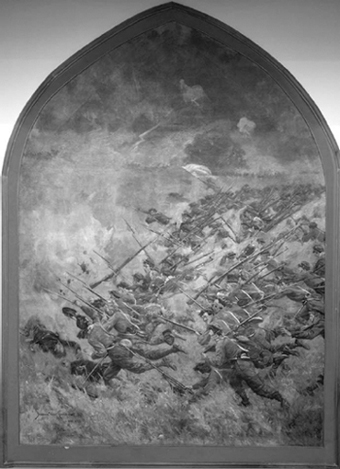
Benjamin West Clinedinsts painting of the charge of the VMI Cadets at New Market. VMI
Maps
Illustrations appear throughout the book for the convenience of the reader
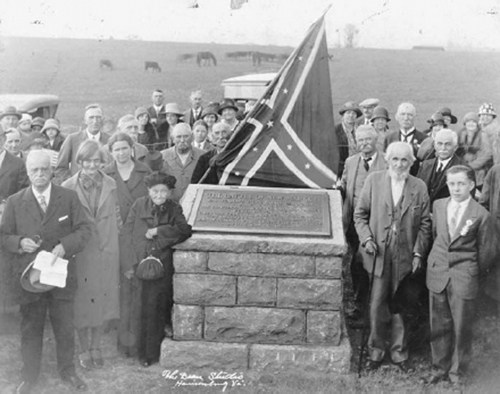
Veterans and townspeople alike gathered on May 15, 1926, for the dedication of a roadside marker about the battle. An elderly Eliza Crim, who with Moses Ezekiel had cared for the dying Cadet Thomas G. Jefferson, is leaning against the monument left of center. Elon Henkel, one of the owners of Henkel Printing (which printed the town newspaper), stands in foreground at the far left with hat and papers in hand. Noted Valley historian John W. Wayland is behind and right of Henkel, with glasses and light gray suit. This monument originally stood on terrain occupied by the 62nd Virginia, but was moved in 1986 to the battlefield park picnic area. VMI Archives
Foreword
It seems a bit strange to be writing a Foreword to a book that in effect supersedes ones own, but that nevertheless is the case here, and it is a pleasure. In 1975, I published The Battle of New Market , my second book. For the ensuing thirty-six years it was generally regarded as the definitive work on the battle. The Virginia Military Institute even printed its own edition and issued copies of it to its cadets in the 1970s. The research was great fun tracking down descendants of most of the officers on both sides, and spending many days in the archives at the Institute and elsewhere. Indeed, the research extended as far as Alaska and even a Hungary still behind the old Iron Curtain.
No one finds everything, of course, and it is an axiom of history that new sources start coming to light almost as soon as a book is in print and it becomes too late to use them. Over the years I kept an eye on new findings relating to New Market, but never really thought about the accumulating weight of them. Fortunately someone else did. Charles Knight, who spent several years working at the New Market Battlefield Park in Virginia, devoted years of study to the same sources I found, and uncovered a host of new ones. The result is that his marvelous new book Valley Thunder does not rewrite the entire story of the battle and the men who fought it, but it does rewrite significant portions of it and closes many a gap that I was unable to fill.
Valley Thunder is simply the last word we are ever likely to have or need on this crucial small action in 1864. Even handed and non-partisan, Knight gives credit where credit is due, and in the process brings to the fore the actions of some units hitherto slighted, especially on the Confederate side. No one understands the topography of the battlefield better, and Knights maps reveal a grasp of the nuances of the ground thatwhen integrated with the movements of the combatantsshow better than ever before how this action played out. I am happy to see that he accords General John C. Breckinridge full marks for the ability he displayed in winning the battle against heavy odds, and also lesser commanders like Gabriel Wharton and John Echols. If the Union commander Franz Sigel does not rise much in general estimation, still the ability of his subordinates like Henry Du Pont, Joseph Thoburn, and others reveal why a defeat did not turn into an utter disaster.
Valley Thunder surely takes its place now among the dozen finest and most complete accounts of any Civil War action, and it would be hard to name any account of a secondary fight of this size that has been better treated. Valley Thunder is a contribution not just to Virginia or Confederate literature, but a book that will serve the entire Civil War community for generations to come, and probably much longer than my thirty-six years. The only way we will get a better account is if Breckinridge and the others come to life and give it to us from their own lips.
William C. Davis
Introduction
There has been no shortage of published accounts about the May 15, 1864, Battle of New Market, a relatively small engagement made famous by the participation of the Cadet Corps from the Virginia Military Institute. The fighting even inspired a popular childrens book (in which one of the slain cadets returns to the battlefield in ghostly form to look for his lost watch) and at least one novel focusing on the cadets. This is not a new story. It has been related and written many times, explained an early historian of the battle. Furthermore, it could be told briefly.
Then why tell it again?
Although small in scope by Civil War standards with only about 10,000 total troops involved, the spring combat marked the beginning of the 1864 campaign in the Shenandoah Valley. New Market pitted Major General John C. Breckinridge, a former vice president of the United States, against Major General Franz Sigel, a former German revolutionary who owed his position more to political influence than military merit. The campaign and battle included running cavalry fights, fascinating interactions with Valley civilians, forced marches, bold infantry attacks during a heavy rain storm, flanking operations, and a chaotic retreat that nearly cost the Federals the loss of a small but important army. But it was the participation of the young men from VMI that catapulted the battle into the popular imagination of the public at large and has given New Market a stature in Southern folklore that arguably exceeds its military significance. This romanticizing of the battle began not long after the guns fell silent on that stormy day in May 1864.
One writer in the early 20th century described the historiography of the battle this way:
The amount of literature of the Battle of New Market is unusual. In the North and in the South, following the official reports, came the published letters of many participants. Then came addresses by accomplished and eloquent men, histories of regiments and histories of the campaign. And with this growing literature came divergencies [sic], contradictions, and some rhetorical over-statement.

